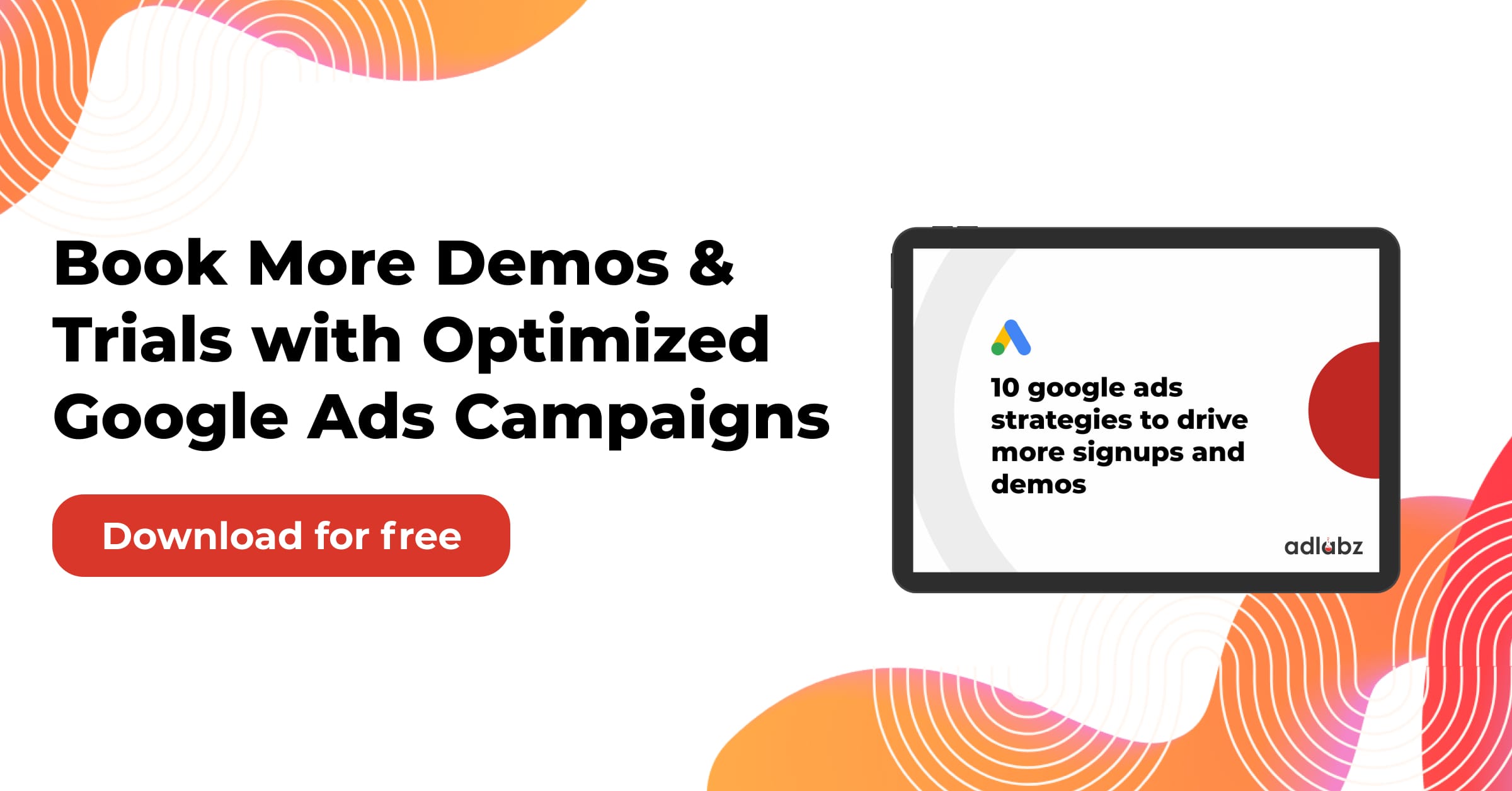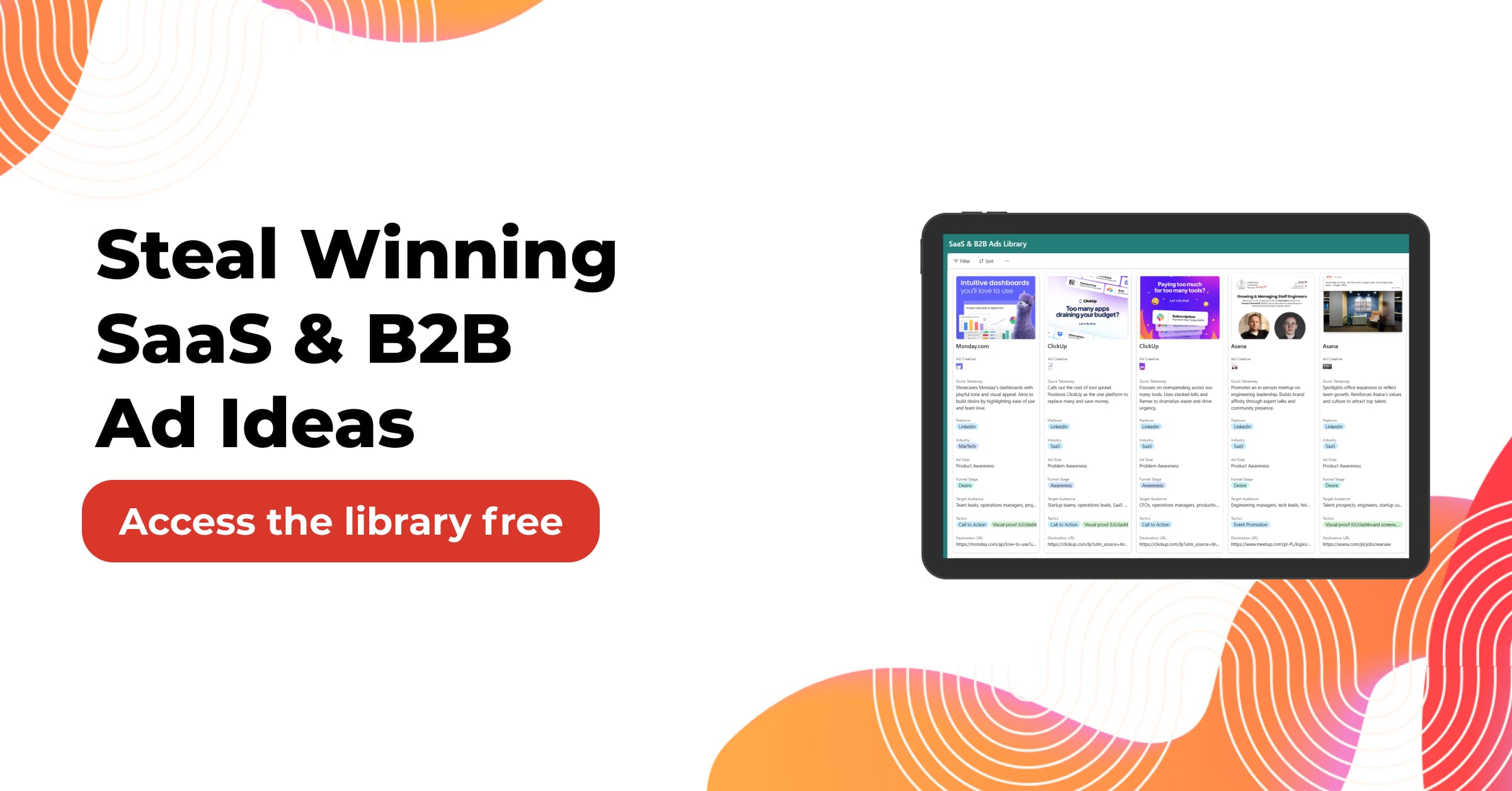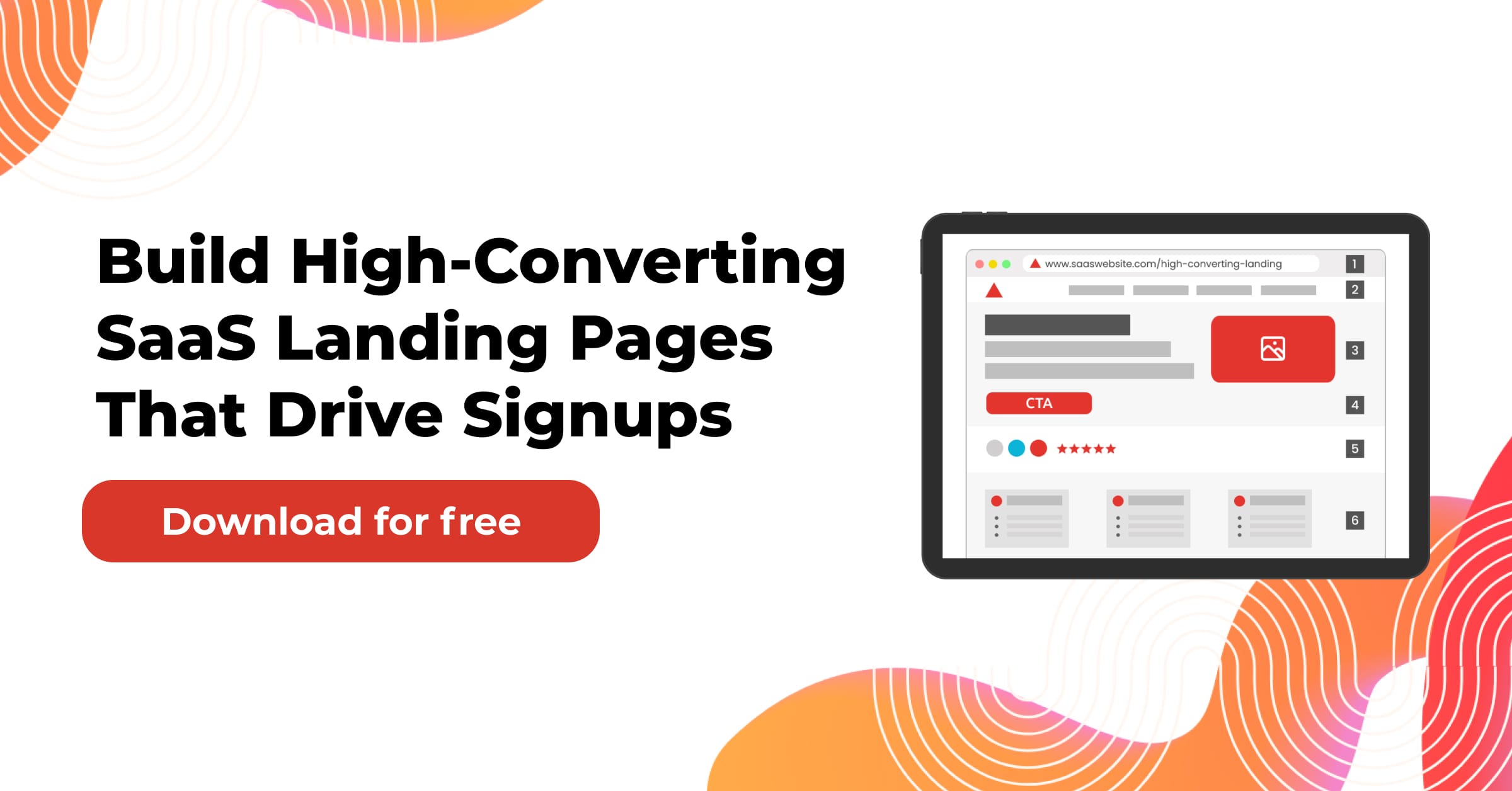SaaS integration is no longer optional—it’s mission-critical. Businesses today rely on dozens of cloud apps to run operations, marketing, sales, and customer service. But without proper integration, these tools often operate in silos.
Let’s explore the top 5 challenges in SaaS Integration—and how to solve them for a seamless, scalable system.
Table of Contents
1. Why Do SaaS Tools Fail to Communicate With Each Other?
Problem:
You have great SaaS tools, but they don’t “talk” to one another. Sales uses HubSpot. Finance runs on Xero. Your support team works in Zendesk. Yet, none of them share data natively.
Why It Happens:
Most SaaS apps are built as standalones. Each has its API, data model, and limitations. Without integration, users end up doing manual work—copy-pasting data, repeating actions, or relying on outdated info.
How to Solve It:
- Use an iPaaS (Integration Platform as a Service) like Zapier, Make.com, or Workato to connect apps with minimal code.
- Standardize your data model so fields like “Customer Name” or “Invoice ID” mean the same thing across systems.
- Start with the most critical flows—like CRM → Marketing Automation, or Payment Gateway → Accounting.
Example:
A SaaS startup connects Stripe to QuickBooks using Make.com. Now, every transaction auto-logs into the accounting system—no manual work needed.
Must Watch: https://www.youtube.com/watch?v=8LsP9jVcJQU
2. What Makes SaaS Integration Projects Drag On?
Problem:
You start the integration with confidence, but 3 months later, it’s still not done. Bugs show up. Timelines stretch. Teams are frustrated.
Why It Happens:
SaaS integrations often lack:
- Clear data mapping
- Ownership across teams
- Understanding of API limits and latency
- Testing environments
Also, business needs evolve mid-project, introducing new requirements.
How to Solve It:
| Phase | Integration Tip |
|---|---|
| Planning | Map out source & destination fields clearly |
| Execution | Use API documentation & test environments |
| Handoff | Ensure retry logic for failures is built-in |
| Monitoring | Log errors and set up alerts |
Pro Tip:
Assign a technical integration lead who bridges business needs with engineering constraints.
Example:
An HR SaaS tried integrating BambooHR with Slack for onboarding alerts. Initial delays were due to Slack’s rate limits. Solution? Throttle API calls and add a queue system.

3. How Do You Handle Different Data Formats in SaaS Integration?
Problem:
One system uses YYYY-MM-DD, the other MM/DD/YYYY. Some fields are text; others are JSON. IDs mismatch. You get validation errors constantly.
Why It Happens:
SaaS platforms rarely follow a universal data standard. This leads to:
- Field mismatch
- Missing required fields
- Transformation overhead
How to Solve It:
- Use middleware to format data before passing it downstream.
- Validate payloads using JSON Schema or custom scripts.
- Create a data transformation layer using tools like AWS Lambda or custom microservices.
Real-World Scenario:
Your app pushes lead data to Salesforce. Salesforce expects FirstName, but your app sends first_name. Without mapping, the record fails.
Example Fix:
| Source Field | Destination Field |
|---|---|
| first_name | FirstName |
| email_address | |
| sign_up_date | CreatedDate |
4. Why Do Integrated Systems Break After Updates?
Problem:
Everything works fine—until one SaaS app updates its API. Suddenly, integrations stop. Data fails to sync. Users complain.
Why It Happens:
SaaS platforms evolve fast. Versioned APIs get deprecated. Auth methods change. Rate limits tighten. If your integration isn’t built to adapt, it breaks.
How to Solve It:
- Always use versioned API endpoints, not unversioned ones.
- Subscribe to changelogs from your integrated apps (e.g., via RSS or email).
- Run regression tests weekly using tools like Postman or automated scripts.
- Use retry and fallback logic for critical workflows.
Pro Tip:
Add feature flags to disable an integration temporarily while you debug, rather than affecting the whole system.
Example:
Your app pulls invoice data from FreshBooks. FreshBooks updates its endpoint /v1/invoices to /v2/invoices. Your integration needs to detect and switch smoothly.
5. How Do You Secure Data During SaaS Integration?
Problem:
You’re moving sensitive data—customer records, billing info, and user IDs. One misstep and it’s a security nightmare.
Why It Happens:
SaaS integrations can expose data through:
- Improper API token storage
- Unencrypted data transfers
- Open webhooks without validation
- Broad OAuth scopes
How to Solve It:
| Best Practice | Description |
|---|---|
| Use HTTPS everywhere | Encrypt data in transit |
| Store API keys securely | Use Azure Key Vault or AWS Secrets Manager |
| Validate Webhooks | Check HMAC signatures |
| Apply least privilege | Use narrow OAuth scopes |
Example:
Instead of using a global API key for all users, generate per-user tokens with limited permissions.
Compliance Tip:
If you’re handling PII or payment data, ensure integrations are GDPR and SOC 2 compliant.
Bonus: When Should You Build vs Buy a SaaS Integration?
Problem:
You need a Salesforce-to-Zendesk integration. Should your dev team build it custom, or use a prebuilt solution?
How to Decide:
| Factor | Build | Buy |
|---|---|---|
| Budget | High upfront dev cost | Lower initial cost |
| Flexibility | Fully customizable | Limited by provider |
| Speed | Takes weeks/months | Can be live in hours |
| Maintenance | You own bug fixes | Vendor handles updates |
| Scalability | Can scale with custom logic | May require vendor upgrade plans |
Framework to Use:
Use Build when:
- You need unique business logic
- You’re integrating internal apps
- You control both endpoints
Use Buy when:
- Time-to-market is key
- The integration is common (e.g., Slack + HubSpot)
- Your team lacks bandwidth
Deeper Look: Building a Scalable SaaS Integration Framework
Once you’ve addressed the core challenges of SaaS Integration, the next step is building for scale. One-off connections may work in the short term, but long-term growth requires a reusable and maintainable framework.
Key Components of a Scalable Integration Strategy:
| Component | Purpose |
|---|---|
| Reusable Connectors | Avoid rebuilding logic every time |
| Logging & Monitoring | Detect failures early |
| Version Control | Track changes to integration logic |
| Central Orchestration | Control data flows from one central place |
| Retry Queues | Avoid data loss during outages or API issues |
Example:
Your marketing team wants to integrate HubSpot, Intercom, and Webflow. Instead of custom-coding each integration, you create reusable connectors in Workato or Tray.io that plug into each system through standardized modules.

Best Practices: SaaS Integration, Maintenance and Updates
Even after successful deployment, integrations require ongoing care. APIs evolve, business logic changes, and new SaaS tools are introduced.
Maintenance Checklist:
- Monitor API Deprecations:
Subscribe to product changelogs and developer newsletters. - Run Periodic Audits:
Every 3–6 months, review:- Data accuracy
- Sync frequency
- Field mapping relevance
- Test Before You Push:
Maintain staging environments for testing integration updates without affecting production data. - Document Everything:
Use tools like Notion or Confluence to track:- API endpoints
- Field mappings
- Logic flows
- Known limitations
- Set Ownership Roles:
Assign internal owners per integration. They handle updates, testing, and issue resolution.
Security Layer: Making SaaS Integration Compliant
Security becomes even more critical when integrations involve:
- Personally identifiable information (PII)
- Billing and payment data
- Health records (HIPAA compliance)
- Educational data (FERPA)
Here’s how to keep your integrations secure and compliant.
Security and Compliance Measures:
| Measure | Why It Matters |
|---|---|
| OAuth 2.0 Authorization | Secure and scoped app access |
| Role-based Access Control | Limit integration access to authorized users |
| Token Rotation | Prevent abuse from leaked credentials |
| HMAC Validation for Webhooks | Ensure payload authenticity |
| TLS/HTTPS Encryption | Protect data in transit |
| Regional Data Hosting | Align with GDPR, CCPA, or regional mandates |
Example:
An edtech platform integrated Stripe and Salesforce. Since it handles student data, it hosts all integrations in EU regions with HMAC-secured webhooks, encrypted payloads, and strict role-based access.

Tool Stack: Choosing the Right SaaS Integration Tools
Selecting the right stack is critical to ensuring that integrations are reliable, fast, and cost-effective.
Tool Comparison Table:
| Tool | Best For | Pricing | Notes |
|---|---|---|---|
| Zapier | Simple, fast integrations | Freemium | Easy UI, limited logic depth |
| Make.com | Visual workflows + conditional logic | Freemium | More flexible than Zapier |
| Workato | Enterprise automation and governance | Premium | Great for scaling |
| Tray.io | API integrations with branching logic | Premium | Dev-friendly, powerful |
| MuleSoft | Large-scale enterprise architecture | Enterprise | Heavy-duty, costly |
| AWS Lambda / Azure Functions | Custom low-code integrations | Pay-as-you-go | Great for custom logic |
Pro Tip:
Start small with Zapier or Make. As your integration complexity grows, move into Tray.io or Workato territory.
Case Study: Streamlining SaaS Integration in a Scaling Startup
Background:
A B2B SaaS startup managing HR software used over 9 cloud tools—Jira, HubSpot, Xero, Calendly, Slack, and more. None were integrated. Teams wasted 10+ hours weekly on manual updates.
Challenges Faced:
- Manual error-prone processes
- Missed follow-ups due to data delays
- Inconsistent reporting across departments
What They Did:
- Mapped workflows between teams (e.g., Sales → Customer Success → Finance)
- Used Make.com to integrate apps with minimal custom code
- Deployed logging layer via Airtable to track syncs and failures
- Introduced auto-escalation alerts in Slack for any sync failure
Free SaaS & B2B Ads Library: https://www.youtube.com/watch?v=EVBFbpE8jzY
Results:
- Saved 36+ hours/month in manual effort
- Improved lead response time by 28%
- Finance reporting became real-time
Leveraging Event-Driven Integrations for Real-Time Efficiency
Modern SaaS businesses are transitioning to event-driven architectures to enhance synchronization speed and system responsiveness.
What Is Event-Driven Integration?
Instead of relying on scheduled polling to check for changes, applications emit events in real-time. These are picked up instantly by subscribing systems.
For example:
- When a lead form is submitted, an event triggers instant CRM entry
- When a payment fails, an alert is pushed to the support team
- When a new document is uploaded, the storage system logs it immediately
Benefits of Going Event-Driven:
| Benefit | Outcome |
|---|---|
| Real-time data sync | Better user experience |
| Lower API costs | No need to poll or pull repeatedly |
| Scalability | Systems react automatically to events |
| Decoupled architecture | Makes integrations easier to manage |
Example:
A SaaS company connects Stripe → Intercom → Slack. When a payment fails, a webhook from Stripe triggers an Intercom note and sends an alert to a Slack channel—all within 5 seconds.
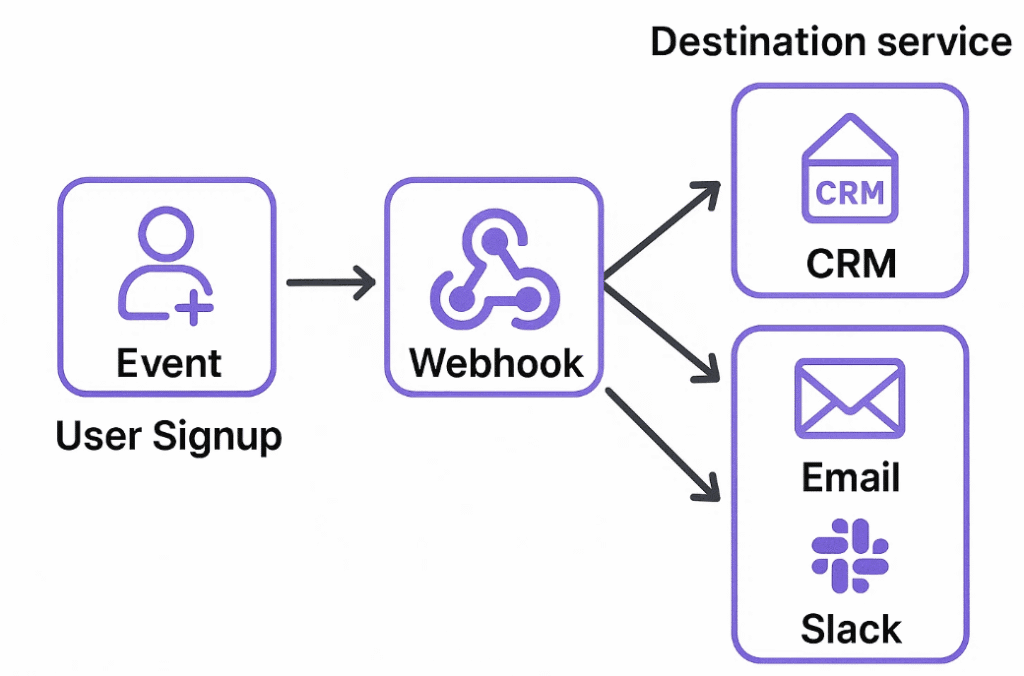
Managing SaaS Integration Across Departments
As companies scale, different teams adopt different SaaS tools—sometimes without coordination. This creates data silos and redundant efforts.
To streamline integrations across departments:
- Assign a central integration owner or architect to oversee system-wide design
- Document integrations in a shared workspace (Notion, Confluence, or Airtable)
- Adopt a centralized orchestration tool to visualize data flows between departments
- Create naming conventions and governance rules for APIs, webhooks, and logs
This approach ensures that integrations are not just reactive but part of an intentional business strategy.
Example:
A growth-stage SaaS platform used Airtable to map out all integrations between Product, Marketing, and Customer Success. This revealed duplicate workflows and helped consolidate logic under one platform, reducing integration sprawl by 40%.
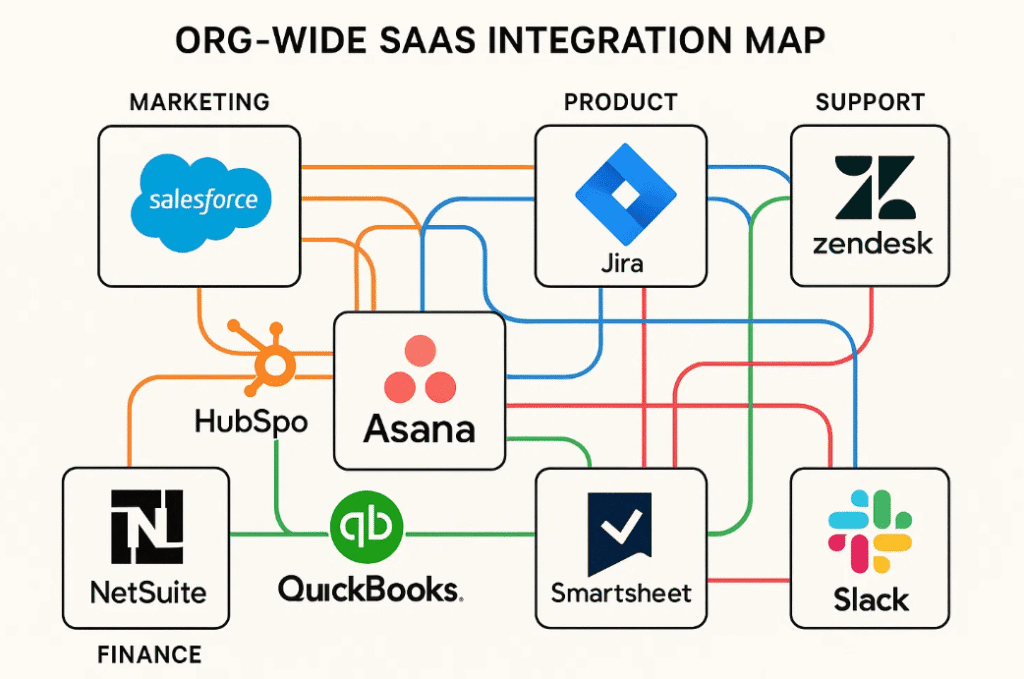
Measuring the ROI of SaaS Integration
Many SaaS teams invest in integrations without tracking their actual return. To justify ongoing investment, it’s essential to quantify the impact.
Key Metrics to Track:
| Metric | What It Reflects |
|---|---|
| Hours saved per month | Operational efficiency |
| Time to sync (in seconds) | Data freshness and UX improvement |
| Error rate | Integration reliability |
| Lead response time | Marketing and sales velocity |
| User onboarding time | Product adoption efficiency |
These metrics can be tied directly to cost savings, customer satisfaction, and team productivity.
Related Guide: https://www.youtube.com/watch?v=BP81a0_6dtI
Example:
A fintech SaaS platform cut onboarding time from 3 days to 1 hour by integrating form submissions, DocuSign, and internal approval systems, resulting in a 22% increase in conversions from trial to paid.

Creating a Future-Ready SaaS Integration Strategy
With new tools emerging every year, your integration approach must be adaptable. A future-ready strategy involves:
- Composability: Use plug-and-play integration modules
- Low-code/No-code tools: Empower non-engineers to build and test integrations
- Observability: Add dashboards and health monitors
- Security by design: Bake in compliance and privacy policies from day one
- AI-readiness: Structure data pipelines to support future machine learning use cases
By taking a forward-looking approach, you ensure that integrations remain an asset—not a liability—as your SaaS business grows.
You might also like:



